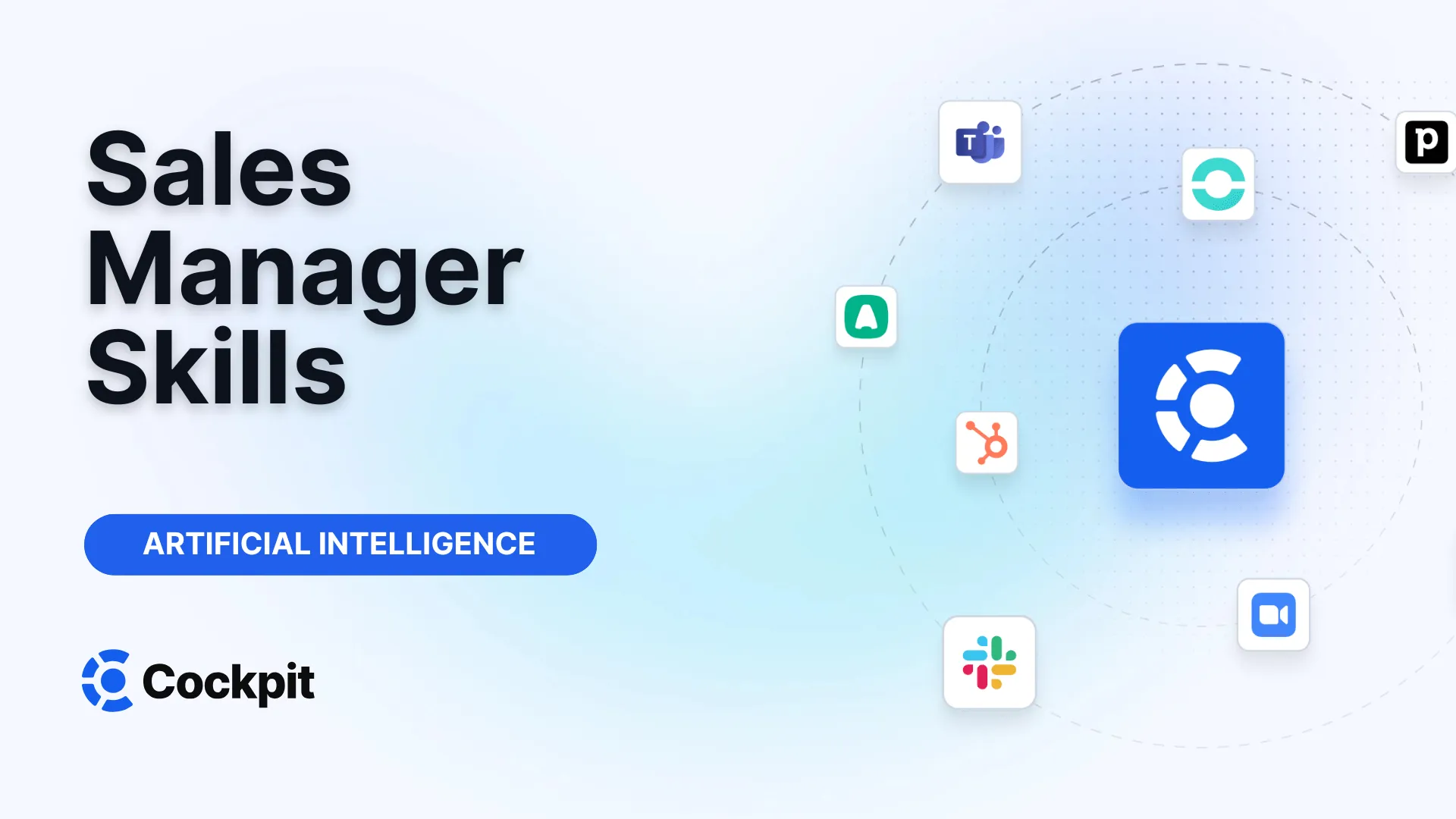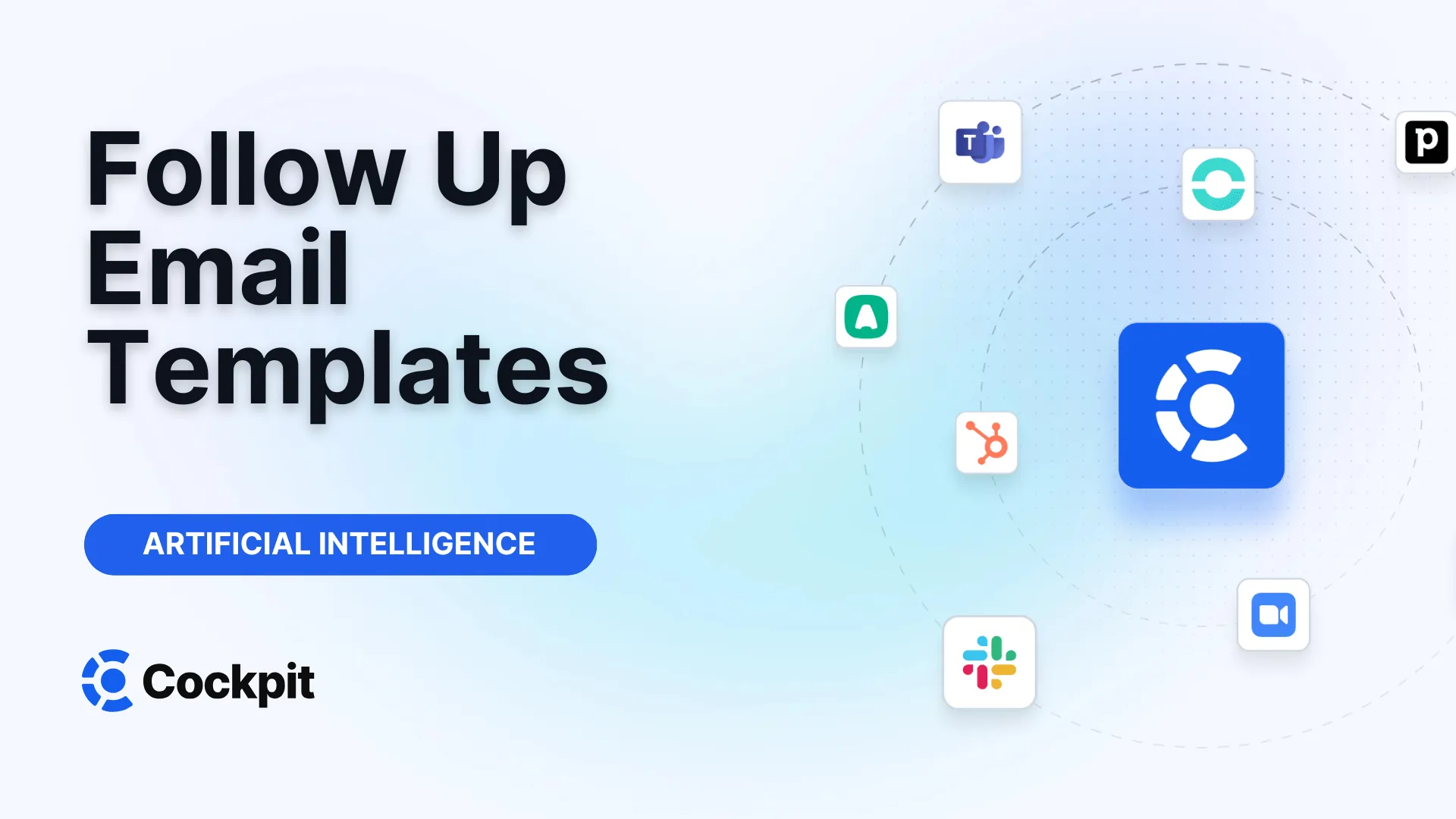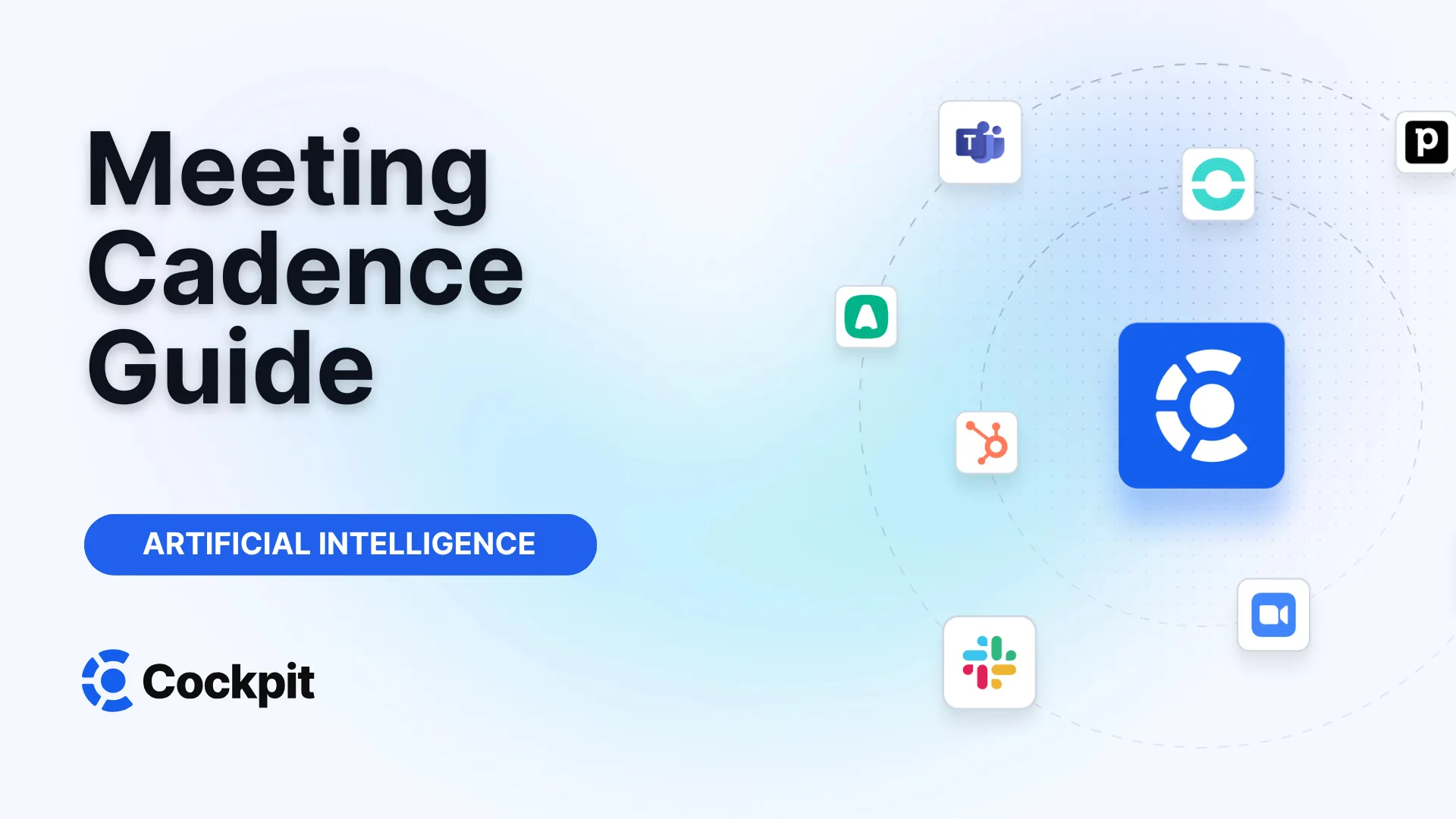Optimize your sales force in just a few clicks

Thousands of sales teams boost their performance with Cockpit. Why shouldn't you?
Explore CockpitSummary
The world of business-to-business (B2B) sales is undergoing a significant transformation. Are your traditional methods struggling to generate qualified leads? Are you wondering how to turn interested prospects into loyal customers in a market where buyers are more informed and demanding than ever before? If you are looking to refine your approach, understand the dynamics that govern purchasing decisions today, and build an action plan that not only meets but exceeds your revenue goals, you are in the right place. Without a robust and adaptable B2B sales strategy, even the most innovative product risks remaining on the shelf.
What is a B2B Sales Strategy?
Before diving into the development of a plan, it is essential to clarify the fundamentals. B2B sales involve selling products or services directly to other businesses, as opposed to B2C (business-to-consumer) sales, which target final consumers. This distinction is fundamental because it shapes the entire sales process. B2B transactions are characterized by longer sales cycles, higher contract values, and the involvement of multiple stakeholders. A B2C buyer may purchase a sweatshirt on impulse, but a company investing in new software typically involves seven decision-makers in a process that can extend over four to eight months.
A sales strategy is much more than a simple list of actions. It is a comprehensive roadmap that guides your sales team. It includes the company's objectives, the positioning of your products, a detailed competitive analysis, as well as the key processes and actions that lead to the achievement of sales goals. For a modern B2B organization, having such a framework is not a luxury but a necessity. It clarifies priorities, smooths the sales pipeline by anticipating obstacles, strengthens customer relationships through a consistent message, and ultimately drives growth and revenue.
Any company selling to other businesses—be it manufacturers, service providers, agencies, distributors, or technology firms—benefits from a strategic approach. It optimizes each stage of the journey, from lead generation to retention, ensuring every effort aligns with a common objective.
The Pillars of a Modern B2B Sales Approach
To build an effective B2B sales strategy, you must first understand that the playing field has changed. Today's buyers no longer follow a linear path. They are autonomous, conduct their own research, and interact with suppliers across multiple channels.
Understanding the Modern Buying Journey and Your Ideal Customer
The B2B buying journey has become decidedly digital and omnichannel. In 2016, a B2B company used an average of five distinct channels to interact with its suppliers. By 2021, this number had doubled to ten. Today, 86% of B2B buyers prefer to use digital channels, effortlessly switching from a website to a mobile app, from an email to a video conference. Omnichannel excellence—which allows customers to seamlessly navigate between these touchpoints without losing context—is no longer optional. It is a growth driver: companies adopting it see a 10% higher market share growth.
To navigate this complexity, the first step is to know precisely whom you are addressing. Creating an Ideal Customer Profile (ICP) is indispensable. This document goes beyond simple demographics. It describes the perfect company for your solution by considering:
- The industry and size of the company.
- Operational challenges and pain points it faces.
- Strategic objectives it aims to achieve.
- Technologies it already uses.
- Triggers that signal a need for your solution.
A well-defined ICP allows you to focus your efforts on the highest-potential accounts, save time and resources, and personalize your message so that it resonates with maximum relevance.
Aligning Marketing and Sales Teams
One of the greatest barriers to commercial performance is misalignment between marketing and sales. If marketing generates leads that sales deem unqualified, the entire pipeline suffers. A high-performing B2B strategy is based on close collaboration, often called "Smarketing."
This alignment takes shape through a common language and shared understanding of the sales funnel. It is crucial to precisely define the touchpoints where a contact becomes a lead, then a qualified prospect, and finally an opportunity. Here is an example of a detailed funnel:
- Touched: The first contact between a lead and a salesperson.
- Connected: Initial conversations to qualify the lead.
- Demo booked: The qualified prospect agrees to a demonstration.
- Demo completed: The demonstration has been conducted.
- Offer sent: The negotiation phase begins.
- Purchased: The prospect becomes a customer.
By following these steps, you can easily identify friction points. If many prospects drop out after the demo, perhaps the message is not aligned with their real needs. If few leads turn into demos, initial qualification may need revision. This alignment ensures consistency in messaging and a seamless customer experience, from the first marketing content to contract signing.
Building Your Sales Action Plan: Key Steps
Once the foundations are set, it is time to build the action plan. This plan must be a living document, adapted to your company, your clients, and your goals.
Product-Led vs. Sales-Led Growth: Choose Your Engine
Your growth strategy fundamentally influences your sales tactics. It is essential to determine whether your company is product-led or sales-led.
| Approach | Description | Ideal for... |
|---|---|---|
| Product-Led Growth (PLG) | The product itself is the main driver of acquisition and conversion. PLG companies often offer free trials or freemium versions so users can discover the product’s value by themselves. | SaaS companies with an intuitive product and potential for viral adoption. Growth is driven by inbound strategies (SEO, content, product marketing). |
| Sales-Led Growth (SLG) | Growth is mainly driven by the sales team actively prospecting, contacting, and converting leads. Human interaction is at the heart of the process. | Companies selling complex, high-value solutions, products for large accounts, or operating in highly competitive markets. Growth relies on outbound strategies (prospecting, cold calling, networking). |
The choice is not always binary; many companies adopt a hybrid approach. The key is to understand where your center of gravity lies to allocate resources effectively.
Set Clear Objectives and Responsibilities
"Increasing sales" is not an objective; it is a wish. An effective strategy relies on SMART objectives (Specific, Measurable, Achievable, Realistic, Time-bound). Start by setting a clear revenue target for the year or quarter, then break it down into leading indicators: number of demos to conduct, proposals to send, and new leads to generate.
Next, clarify roles. Who is responsible for prospecting? Who manages key accounts? Who conducts technical demos? This distribution of tasks ensures every team member knows their contribution and nothing is left to chance. Do not forget to allocate a budget to support this strategy: tools, training, marketing, etc.
Attention
As highlighted by a McKinsey study, a new strategy—especially implementing an inside sales team—should not be seen as a source of immediate savings. Significant initial investment in technology and training is necessary to achieve sustainable results.
Identify Challenges and Integrate the Right Tools
B2B sales involve unique challenges: long decision-making cycles, product complexity, and the need to convince multiple stakeholders. Technology is your best ally to overcome these obstacles. Automation is essential to optimize tasks that do not generate direct value. It is estimated that more than 30% of sales tasks can be at least partially automated, from lead management to quote creation.
This is where platforms like ours come into play. Cockpit is designed to eliminate administrative friction that slows down your sales teams. Imagine: every sales call is automatically recorded, transcribed, and summarized by AI. Key information, next steps, and customer pain points are instantly synchronized with your CRM without any manual entry.
By freeing your teams from time-consuming tasks such as note-taking and CRM updates, you enable them to focus on what they do best: listening, understanding, and selling. This is automation at the service of performance.
CRM tools like Salesforce are indispensable for centralizing data, while lead generation solutions like Dealfront help build lists of qualified prospects. The key is to build a coherent tech stack that supports every stage of your sales process.
Winning Tactics to Outperform in 2025 and Beyond
The market is evolving, and so must your strategy. Companies that dominate today have adopted next-generation tactics that place technology and data at the core of their operations.
Omnichannel and Redefining Sales Teams
As we have seen, omnichannel is the new standard. This has a direct impact on the structure of sales teams. The traditional field salesperson is giving way to more flexible roles.
- Inside Sales: These are not telemarketers but genuine account managers who remotely manage a portfolio of often small to medium-sized clients. They rely on technology to cover a large number of accounts (up to four times more than a field salesperson at half the cost).
- Hybrid Sales: This model combines remote and in-person interactions. It is optimal for larger accounts requiring maximum flexibility. This role should become the norm in the coming years, and companies that have adopted it have experienced superior growth.
A striking example is a global industrial automation leader that segmented its approach: simple products are managed by inside sales, while complex solutions benefit from orchestration between inside sales, technical experts, and field sales representatives.
Automation and Technology Serving Performance
Intelligent automation goes far beyond simple email management. Industry leaders use it to transform their commercial value chain:
- Lead management: AI chatbots qualify prospects and schedule appointments.
- Quote creation: CPQ (Configure, Price, Quote) systems like the one implemented by GEA generate personalized offers in record time, reducing turnaround by 50%.
- Billing and commissions: RPA (Robotic Process Automation) handles administrative tasks, freeing up time for higher-value activities.
Again, tools like Cockpit play a central role. Our automatic post-meeting email drafting feature, based on the actual conversation content, is a perfect example of intelligent automation. It guarantees a fast, personalized, and consistent follow-up while eliminating a manual task for the salesperson.
Hyperpersonalization Through Data
Data is the fuel of modern sales. The best-performing companies do not merely collect data; they transform it into actionable insights to personalize every interaction. Hilti, a supplier of construction tools, offers a fascinating example. By analyzing the usage data of its connected tools, its salespeople can proactively advise clients: optimize their tool fleet, suggest rentals instead of purchases, or schedule preventive maintenance.
This approach requires a solid, clean database. But the payoff is worth it. Data analysis allows you to:
- Predict churn risks.
- Identify cross-selling and upselling opportunities.
- Optimize pricing dynamically.
- Allocate sales reps' time to the most promising accounts.
This is the mission of our AI Playbook at Cockpit. By objectively analyzing calls, it verifies if your sales methodology is followed, detects customer objections, and highlights key moments. It provides managers with concrete data for targeted and hyperpersonalized coaching based on real field feedback rather than speculation.
Expert Tips
Do not sell a product; sell a solution. Focus on deeply understanding your prospects’ challenges and objectives. Use data and testimonials to prove how your offer will solve their problems and generate significant ROI. Empathy, supported by tangible evidence, is the key to building trust and closing lasting deals.
Measuring Success: Key Performance Indicators
A strategy is only effective if its impact can be measured. Tracking the right indicators (KPIs) is essential to evaluate performance, adjust tactics, and forecast future revenues.
Beyond revenue, here are some crucial B2B metrics to monitor:
- New leads in the pipeline: The volume of new opportunities generated over a given period.
- Conversion rate: The percentage of leads that move from one funnel stage to the next.
- Annual Contract Value (ACV): The average annualized revenue per client contract.
- Customer Lifetime Value (CLV): The total revenue generated by a customer throughout their relationship with your company.
- Customer Acquisition Cost (CAC): The total sales and marketing cost to acquire a new customer.
These data, aggregated in a sales dashboard, provide a clear picture of your business health. They help answer strategic questions: which channels generate the best leads? What is the average length of our sales cycle? Are our personalization efforts increasing conversion rates?
Note
The temptation is great to dive headfirst into data analysis. However, the best-performing companies, like Hilti, emphasize the importance of data cleanliness. Before deploying complex analytics tools, ensure your data is standardized and reliable. Start with a few high-impact use cases to prove the approach’s value, then expand gradually.
The world of B2B sales has reached unprecedented complexity but also immense potential. The companies that will succeed tomorrow are those embracing this change. A high-performing B2B sales strategy is no longer a static document but a dynamic ecosystem centered on the customer, fueled by data, and amplified by technology. By aligning your teams, deeply understanding your buyers, and equipping yourself with the right tools to automate and personalize, you will not merely survive; you will create a sustainable competitive advantage that drives your growth for years to come.
What are the Essential Components of a High-Performing B2B Sales Strategy?
An effective B2B sales strategy relies on several interconnected pillars. To succeed, you must integrate the following elements:
- A deep understanding of the customer: This includes creating a detailed Ideal Customer Profile (ICP) and a fine analysis of the modern buying journey, which is increasingly digital and omnichannel.
- Strong alignment between sales and marketing: Both teams must share common goals, a unified language, and a clear vision of the conversion funnel to guarantee a consistent customer experience.
- A clear choice of growth model: Determine whether your approach is primarily product-led or sales-led to allocate your resources optimally.
- Integration of relevant technological tools: Use a CRM for centralization, automation tools (like Cockpit) to free up time, and analytics platforms to transform data into insights.
- A culture of data and personalization: Leverage data to personalize every interaction, anticipate customer needs, and provide targeted coaching to your teams.
- Clear performance indicators: Implement a dashboard with relevant KPIs (ACV, CLV, conversion rate) to measure your strategy’s effectiveness and continuously adjust it.




